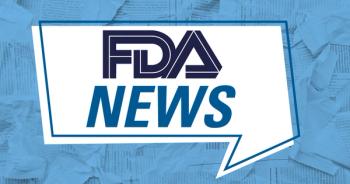
Midtrimester Insulin Resistance May Increase Risk of Preeclampsia
Insulin resistance in pregnancy poses risks for the mother, including preeclampsia and many other pregnancy-related complications. In this editor’s choice article-fast-tracked for publication in the American Journal of Obstetrics and Gynecology due to its clinical importance-researchers explored the association between increased maternal midtrimester insulin resistance and subsequent preeclampsia.
Insulin resistance in pregnancy poses risks for the mother, including preeclampsia and many other pregnancy-related complications. In this editor’s choice article-fast-tracked for publication in the American Journal of Obstetrics and Gynecology due to its clinical importance-researchers explored the association between increased maternal midtrimester insulin resistance and subsequent preeclampsia.
Dr John C. Hauth, professor and chair of the department of obstetrics and gynecology at University of Alabama at Birmingham, and colleagues performed a secondary analysis of 1187 nulliparous women from a previous trial of vitamin C and vitamin E supplementation for prevention of pregnancy-associated hypertension complications. The original trial was completed at 16 clinical centers between 2003 and 2008. Only 12% of the original study population was eligible for inclusion in this data analysis.
During the original study, blood samples were collected from the women between 22 and 26 weeks’ gestation. Insulin resistance was calculated from the fasting maternal plasma glucose (women included in the subsequent analysis had fasted for at least 12 hours prior to the blood tests). Blood pressure measurements obtained during or after the 20th week of pregnancy were used to determine a diagnosis of hypertension. Diagnosis of preeclampsia was made via the consensus of 3 reviewers after they examined deidentified medical charts.
Although Hauth and associates found some statistically significant differences in maternal age, education level, and diastolic blood pressure between the group that had fasting blood data and the group without fasting data, the differences were small and not clinically meaningful. Additional demographic data about the women included in the secondary analysis can be found in Figure 1.
Figure 1. Race and weight data.
The researchers found that glucose and insulin increases were significantly associated with increases in body mass index. In addition, women who were obese (body mass ≥ 30.0 kg/m2) at midtrimester were 2 times more likely than women with normal weight to have a fasting glucose, insulin, and homeostasis model assessment of insulin resistance (HOMA-IR) results in the 75th percentile or higher and a quantitative insulin sensitivity check index (QUICKI) level lower than the 25th percentile.
Hauth and colleagues noted a racial difference in the results. For instance, compared with African American and white women, Hispanic women had a higher percentage of glucose, insulin, and HOMA-IR in the 75th percentile or higher and a QUICKI level lower than the 25th percentile (p < 0.001). Similarly, compared with white women, African American women had a higher percentage of insulin and HOMA-IR results in the 75th percentile or higher (but not glucose) and a QUICKI level lower than the 25th percentile (p < 0.001). Racial disparity was also seen among the overweight and obese women, with more Hispanic women having a HOMA-IR result in the 75th percentile or higher (Figure 2).
Figure 2. Rate of HOMA-IR result of ≥ 75th percentile by race among overweight or obese women (n = 568).
Overall, Hauth and colleagues found that the majority of the patients (49.87%) remained normotensive. The remainder experienced preeclampsia (7.16%) or had elevated blood pressure or proteinuria but not preeclampsia (42.97%). Eight of the women with preeclampsia also had gestational diabetes mellitus.
“After the data were controlled for body mass index, race, ethnicity, treatment group, enrollment blood pressure, and gestational age at sampling, midtrimester fasting HOMA-IR results of ≥ 75th percentile and QUICKI of < 25th percentile remain significant risk factors for subsequent preeclampsia,” the study authors explained. “In low-risk nulliparous women, increasing body mass index and Hispanic/African American ethnicity/race were associated significantly with HOMA-IR result of ≥ 75th percentile and QUICKI of < 25th percentile between 22 and 26 weeks gestation.”
More Information
Related Content
Reference
Hauth JC, Clifton RG, Roberts JM, et al. Maternal insulin resistance and preeclampsia. [
Newsletter
Get the latest clinical updates, case studies, and expert commentary in obstetric and gynecologic care. Sign up now to stay informed.




















